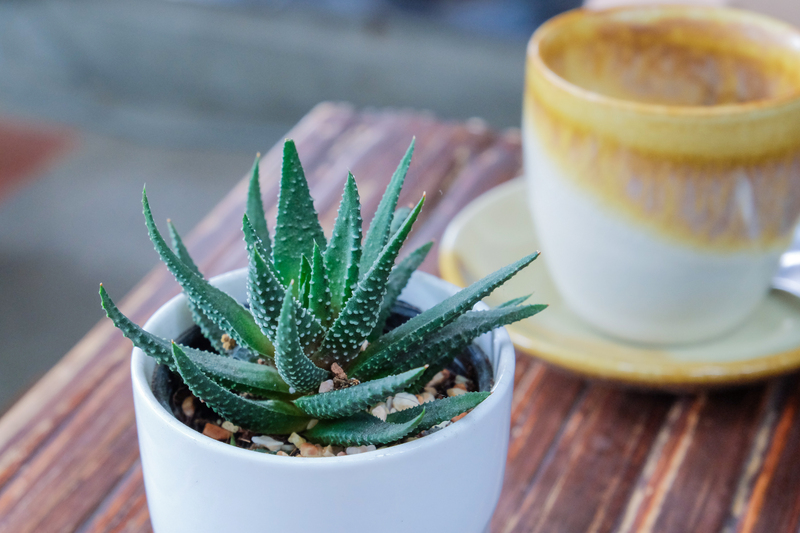Turning Walls into Ecosystems with Vertical Gardening
Posted on 30/08/2025
Turning Walls into Ecosystems with Vertical Gardening
Vertical gardening is transforming urban environments and indoor spaces by turning ordinary walls into vibrant, living ecosystems. With increasing urbanization and shrinking green spaces, green walls--also known as living walls or plant walls--are offering an innovative way to integrate nature into our built environments. In this comprehensive guide, we'll explore how vertical gardens can revitalize your surroundings, the science behind their ecological benefits, and practical tips for getting started on your own vertical ecosystem.

Why Choose Vertical Gardening for Your Walls?
Most urban dwellers are familiar with the lack of green space in cities. Vertical gardening offers a ground-breaking solution, allowing you to cultivate lush greenery in areas where horizontal gardening is impossible. By utilizing vertical surfaces--from home interior walls to building exteriors--these gardens provide opportunities to maximize plant life even in the most space-restricted environments.
- Space Efficiency: Vertical gardens utilize otherwise unused wall spaces.
- Environmental Impact: These installations help combat urban heat, improve air quality, and increase biodiversity.
- Aesthetic Value: Vertical gardens serve as living art, enhancing interior design and outdoor landscapes.
- Health Benefits: The presence of plants reduces stress and boosts overall well-being.
From Bare Walls to Biodiverse Vertical Gardens
Converting a plain wall into a thriving ecosystem involves more than just attaching a few pots and planters. A well-designed vertical garden can support diverse plant and animal life, create microclimates, and promote sustainability. The process of turning walls into ecosystems with vertical gardening requires thoughtful planning, strategic plant selection, and ongoing care.
Understanding Vertical Gardening Systems
Before embarking on your green wall journey, it's important to understand the different types of systems available. Each brings unique advantages and can be tailored to your space, aesthetic, and environmental goals.
1. Modular Panels
- Pre-made panels are fitted with pre-planted pockets or cells for easy installation.
- These can be customized to fit interior or exterior walls.
- Popular for their flexibility and ability to create intricate patterns or living artworks.
2. Hydroponic Vertical Gardens
- Hydroponic systems supply water and nutrients directly to the roots using a soilless method.
- Efficient water use and rapid plant growth characterize these modern living walls.
- Ideal for urban interiors, commercial spaces, and areas where traditional soil-based systems are impractical.
3. Pocket and Felt Systems
- Pocket systems employ durable fabrics with built-in pockets for individual plants.
- These lightweight installations are perfect for small spaces and simple vertical gardens.
- Felt allows for good drainage and root aeration, benefiting plant health.
4. Trellis or Climbers-Based Walls
- Trellises and mesh grids support climbing plants such as ivy, jasmine, or bougainvillea.
- Great for creating natural privacy screens or green facades.
- Low-maintenance and suitable for exterior vertical gardening.
Ecological Benefits of Vertical Gardens
When you turn walls into ecosystems through vertical gardening, you contribute directly to environmental health and biodiversity. Here's how:
1. Enhanced Biodiversity
Living walls become microhabitats for insects, birds, and beneficial microbes. In urban settings, where natural habitats are scarce, these ecosystems help sustain essential pollinators and contribute to a balanced urban environment.
2. Air Quality Improvement
Plants are natural air purifiers. Green walls absorb carbon dioxide and pollutants, releasing oxygen in return. Certain species can even filter specific contaminants, such as VOCs (volatile organic compounds), making indoor air healthier to breathe.
3. Climate Control and Insulation
Vertical gardens offer natural insulation, regulating temperature and humidity in buildings. Exterior living walls can lower indoor temperatures during summer while reducing heat loss in winter--saving energy and reducing utility bills.
4. Stormwater Management
Vegetated walls absorb rainfall, reducing runoff and mitigating the risk of urban flooding. The root systems and substrate retain water, slowly releasing it, and preventing sudden surges into local stormwater systems.
How to Design a Thriving Vertical Garden Ecosystem
Designing an effective vertical garden goes beyond visual aesthetics. Here's a step-by-step plan to ensure your living wall provides both beauty and ecological benefits.
1. Assess Your Space
- How much sunlight does the wall receive daily?
- Is it exposed to wind or rain?
- What is the weight capacity of the wall?
2. Select the Right System
- Decide between hydroponic, soil-based, modular, or pocket systems based on your goals.
- Consider ease of maintenance and irrigation requirements.
3. Choose Suitable Plants
- Native species are ideal, as they support local wildlife and require less care.
- Mix shade-loving and sun-loving varieties according to your wall's orientation.
- Include a diversity of forms: ground covers, ferns, trailing plants, herbs, and flowering species.
- For indoor living walls, select air-purifying plants such as pothos, spider plant, and philodendron.
4. Plan Irrigation and Drainage
- An efficient watering system is critical for vertical gardens. Drip irrigation or hydroponics are common choices.
- Ensure proper drainage to prevent waterlogging and root rot.
5. Implement and Plant
- Install the vertical garden structure securely on your wall.
- Arrange plants according to their light and water needs.
- Stagger planting for a fuller, multidimensional effect as the garden matures.
6. Maintenance and Monitoring
- Regularly prune, fertilize, and inspect for pests or diseases.
- Adjust watering intervals seasonally.
- Replace plants as needed to maintain year-round vibrancy.
Popular Plants for Vertical Gardening Ecosystems
Not all plants thrive in vertical gardens. Choosing resilient, low-maintenance species ensures success. Here's a list of vertical gardening favorites:
- Ferns: Boston fern, maidenhair fern (shade-loving and moisture-hungry)
- Succulents: Sedum, echeveria, jade plant (tolerate drought and direct sunlight)
- Vines and Trailing Plants: English ivy, golden pothos, creeping fig
- Herbs: Basil, oregano, mint, thyme (excellent for kitchen vertical herb gardens)
- Flowering Plants: Begonia, impatiens, nasturtium (brighten up the display with color)
- Mosses and Lichens: For artistic indoor wall systems where humidity is high
DIY Vertical Gardening: Creative Ideas for Home and Office
The versatility of vertical gardening means you can adapt the concept to almost any wall--indoors, outdoors, large, or small. Here are some creative and practical ideas to inspire your next green project:
- Framed Living Art: Create a picture frame filled with succulents and moss, turning your wall into a stunning living artwork.
- Pocket Planters: Use fabric shoe organizers or felt pocket systems for simple and budget-friendly kitchen herb gardens.
- Pallet Gardens: Repurpose wooden pallets by filling them with soil and your favorite plants, then mount them vertically against a fence or wall.
- Recycled Bottle Gardens: Attach used plastic bottles as individual planters to fences or outdoor walls for a fun, eco-conscious project.
- Modular Interior Walls: Use pre-fabricated panels filled with tropical plants in living rooms or offices to improve indoor air and mood.
Challenges and Solutions in Vertical Gardening
While vertical gardening offers immense benefits, there are some challenges to consider:
- Watering Complexity: Water can run off quickly. Solution: Install automated drip irrigation and check regularly for even coverage.
- Plant Longevity: Some species may outgrow their space. Solution: Choose slow-growing or dwarf varieties, and plan for seasonal changes or replacements.
- Pest Management: Dense planting can attract insects. Solution: Inspect plants regularly, use organic pest controls, and encourage natural predators.
- Structural Concerns: Weight and moisture can stress walls. Solution: Confirm wall strength, use waterproof backings, and choose lightweight substrates.
Real-World Examples: Inspiring Vertical Garden Ecosystems
Some of the world's most iconic buildings now sport vertical garden ecosystems, demonstrating how functional art and ecology can blend:
- One Central Park, Sydney: Features one of the largest living facades, designed by Patrick Blanc, supporting hundreds of native species and attracting birds and pollinators.
- NAAVA Green Walls, Finland: Advanced hydroponic green walls purify indoor air and improve productivity in offices and public buildings.
- The Musee du Quai Branly, Paris: Boasts a lush, scientific plant wall with around 15,000 plants from 150 species, demonstrating the potential of vertical gardening on a massive scale.
- Local Restaurants and Cafes: Creative establishments worldwide use edible vertical gardens to grow herbs and greens, offering guests the freshest ingredients possible.

Future Trends: Smart, Sustainable, and Scalable Vertical Gardens
The evolution of vertical gardening is accelerating, with trends emphasizing sustainability, automation, and smart design:
- Internet of Things (IoT) Integration: Smart sensors now monitor soil moisture, nutrient levels, and light, optimizing plant care with minimal human intervention.
- Green Building Certifications: Living walls contribute points for LEED and WELL certifications, supporting sustainable architecture.
- Urban Agriculture Growth: Vertical farms and edible plant walls help address food security and promote fresh, local produce in urban areas.
- Community Projects: Neighborhood initiatives are transforming schoolyards, public spaces, and apartment buildings with community-maintained vertical ecosystems.
Conclusion: Turning Walls Into Living Ecosystems
From apartments to office towers, from small courtyards to city squares, vertical gardening gives us the power to turn walls into ecosystems. These living walls are much more than decorative trends--they are vital infrastructures for urban biodiversity, climate resilience, and human well-being.
Whether you're a city dweller with a passion for plants, a business owner seeking greener workspaces, or an environmentalist aiming to boost biodiversity, starting a living wall ecosystem is a fun, rewarding, and impactful venture. With some planning and care, your wall can soon teem with life, beauty, and ecological function.
Ready to get started with vertical gardening? Turn your walls into an inspiring ecosystem and become part of a greener future today!

